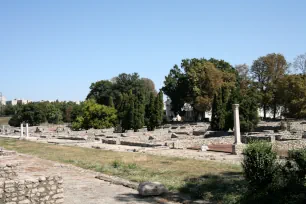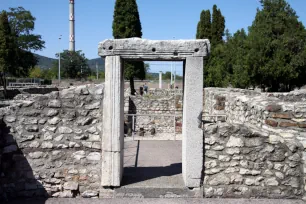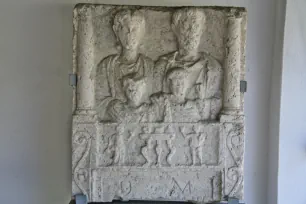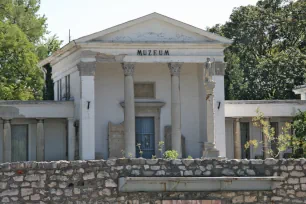Aquincum is an archaeological park at the site of the former Roman city of the same name. Visitors can stroll through the ruins or visit the museum where many of the excavated Roman artifacts are displayed.
A Roman City


Aquincum was originally founded in the first century AD as a settlement in support of the legionary garrison that was located nearby. The inhabitants were originally Eravisci, a tribe of Celtic origin. They adopted the Roman culture and were already fully integrated when in the year 124 AD, Emperor Hadrian promoted the settlement to the status of municipium, which officially promoted the inhabitants to Roman citizens. Aquincum was later promoted to a colonia and became the capital of Pannonia Inferior.




Ruins
The city enjoyed its heyday in the third century AD, when more than ten thousand people lived in Aquincum. The surrounding area was also home to a garrison and two large arenas. With the fall of the Roman Empire and the invasions of barbaric tribes, the city fell into ruins in the late fourth century.
Aquincum Today
In the nineteenth century, the ruins of the Roman city of Aquincum were excavated. Today, they give a good impression of the city’s size and layout. Aquincum covered an area of about 500 by 400 meters and had a typical Roman layout with a rectangular street grid and a forum at the center. The city was enclosed by a wall with four gates.
The foundations of the temples, the basilica (a law court), the public bathhouses, the macellum (market hall), the curia (a government building), stores and residences that made up Aquincum are all visible. You can also see remnants of the central heating systems, and there are even limestone drain covers of the sewerage system.
About one quarter of the former city is now open to visitors. Attractions at the site also include the Painter’s House – a reconstructed Roman dwelling – and the Chronoscope, a digital visual display which allows visitors to see the town reconstructed.
The Museum
The grounds also contain open arcades where many excavated objects such as tombstones, altar stones and pillars are displayed. The most interesting and valuable objects are exhibited in the museum, a neoclassical building located at the edge of the archaeological park. The centerpiece of the museum is the reconstructed Aquincum organ, the best preserved organ from the Antiquity. The organ reportedly sounds much like a pan flute. Another highlight is a magnificent mosaic that shows the abduction of Deianeira by the centaur Nessus.

